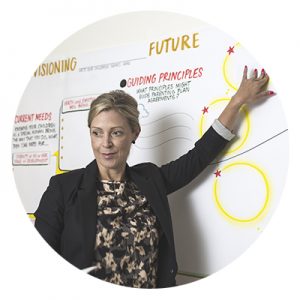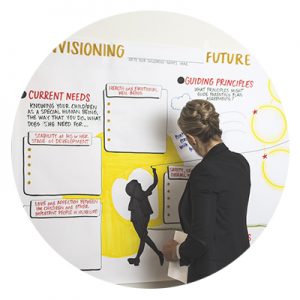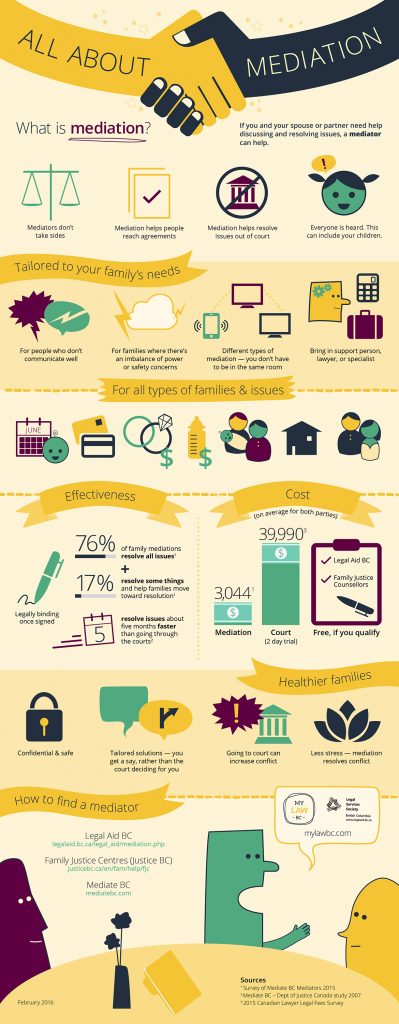80% of people remember what they see and do.*
You should be able to relate to this from school: we only remember 10% of what we hear and 20% of what we read. Compare this to visual communication, where people remember an astounding 80% of what they see and do, and it’s easy to see how visuals are an effective tool in the mediation process.
When you combine visuals with participatory conversation, you’re bound to remember much more.
This is especially important during the mediation process, when emotions can run high and you have a lot of information and feelings to sift through.
 With visual mediation you become co-creators of large-scale visual maps of your discussion. As your talk, I graphically record important parts of your conversations to improve understanding between you and your spouse, and understanding of the process.
With visual mediation you become co-creators of large-scale visual maps of your discussion. As your talk, I graphically record important parts of your conversations to improve understanding between you and your spouse, and understanding of the process.
These visuals can be used by the mediator to engage both partners in making sense of the information. This might involve moving and sorting information or drawing important connections. As you sit immersed in the visual panorama of your discussion, you and your partner will become able to see the big picture of your decisions. Often, people gain new insights.
When you can recall information from one meeting to the next, things go much smoother, saving you time and money.
We are visual creatures. When you doodle an image that captures the essence of an idea, you not only remember it, but you also help other people understand and act on it – which is generally the point of meetings in the first place.
— Tom Wujec, author, Fellow at Autodesk, adjunct professor, TED speaker, and pioneer in the emerging practice of business visualization
 I’ve developed a unique mediation process, wherein I use the power of visual communication in combination with facilitative, interest-based mediation. Using visual templates, live mapping, and other visual tools, I help clients understand where they’re at, remember what they’ve discussed, and see different layers of information in the dialogue.
I’ve developed a unique mediation process, wherein I use the power of visual communication in combination with facilitative, interest-based mediation. Using visual templates, live mapping, and other visual tools, I help clients understand where they’re at, remember what they’ve discussed, and see different layers of information in the dialogue.
Your goal is to leave mediation with a set of agreements you can live with and build your future on. My goal is that you leave knowing the process of arriving at those agreements was fair and that you take away greater self-awareness and understanding. When you divorce, you’ve lost the dreams you had for your family, but you can grow, move on, and build a stronger future.


